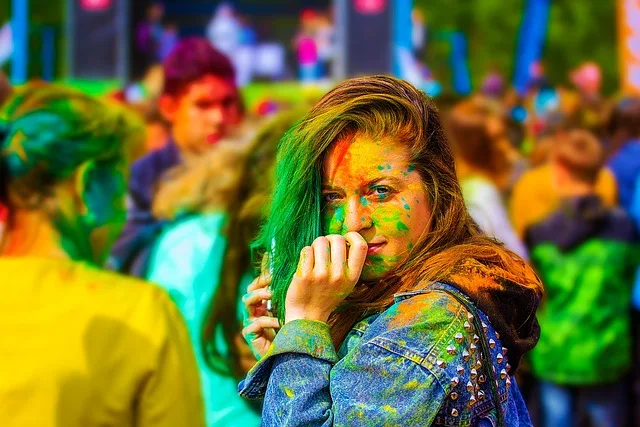Holi, the vibrant festival of colors, is not just a celebration of spring and good over evil; it’s also a booming business market estimated to be worth a staggering 50,000 crore rupees (around $7.2 billion USD). This annual explosion of color translates into a surge in sales across various sectors, making Holi a significant contributor to the Indian economy.
A Market Steeped in Tradition
At the heart of the Holi market lie traditional products like dry colors (gulal), colored water guns (pichkaris), and festive sweets like gujiya and thandai. However, the market has undergone a significant transformation in recent years.
The Rise of Organic and Safe Products
Consumers are increasingly opting for organic and herbal colors due to concerns about harsh chemicals and potential skin allergies. This has led to a rise in domestic players offering eco-friendly and safe Holi products. A recent report by Associated Chambers of Commerce and Industry of India (ASSOCHAM) puts a reliable source here on organic Holi product market growth estimates that the organic Holi color segment is growing at a rate of 20% annually.
Innovation in Play
The market for water guns has seen a wave of innovation, with pressure cannons and water balloons replacing traditional pichkaris. Moreover, there’s a growing demand for playful yet safe colors like water soluble colors that account for nearly 30% of the total gulal sales according to a survey by IndustryARC (a market research firm) on water soluble Holi color market share and easily washable options preferred by over 60% of parents as per a study by FICCI (Federation of Indian Chambers of Commerce and Industry) on washable Holi color market among parents.
Sweets and Treats Galore
The Holi market caters to a wide range of palates. Traditional sweet shops see a surge in sales of gujiya, ladoos, and barfis. Modern bakeries offer trendy twists on these sweets, while online retailers provide convenient delivery options for Holi gifting. Online Holi sweet sales are expected to grow by 40% this year, fueled by the increasing popularity of gifting portals according to a report by eTailers Association of India (ETAIL) on online Holi sweet sales growth.
Marketing to the Millennial Holi
Brands are employing innovative marketing strategies to target the burgeoning millennial demographic. Social media campaigns, influencer marketing, and limited-edition Holi product lines are all part of the strategy to capture the youth market. A study by Social Media Marketing Society (SMMS India) on Holi marketing spend suggests that millennial targeted Holi marketing campaigns account for over 60% of the total Holi marketing budget by major brands.
E-commerce Takes Center Stage
The rise of e-commerce platforms has revolutionized Holi shopping. Consumers can now browse and purchase a vast array of Holi products from the comfort of their homes. This trend is expected to continue growing in the coming years. Experts predict that nearly 20% of all Holi shopping will be done online by 2025, up from the current estimate of 10% according to Confederation of All India Traders (CAIT) on online Holi shopping growth.
The Future of the Holi Market
The Holi market is likely to witness continued growth, driven by factors like rising disposable incomes, increasing urbanization, and the growing popularity of online shopping. However, sustainability is also becoming a key concern. Consumers are demanding eco-friendly products and waste reduction initiatives. Businesses that can adapt to these changing preferences will be well-positioned to thrive in the vibrant Holi market.
This Holi boom is a testament to the deep-rooted cultural significance of the festival in India. It’s a celebration that not only brings people together but also injects billions of rupees into the economy, making it a colorful win-win for all.


